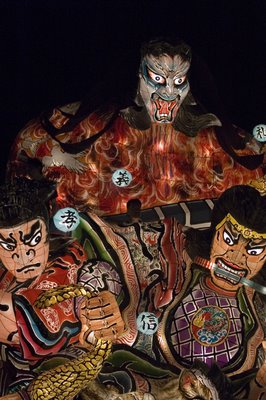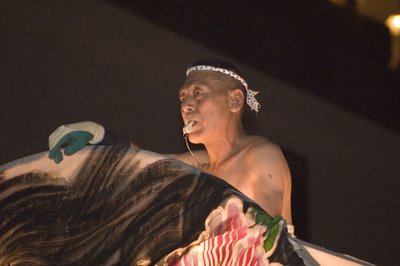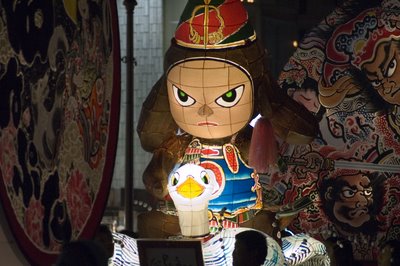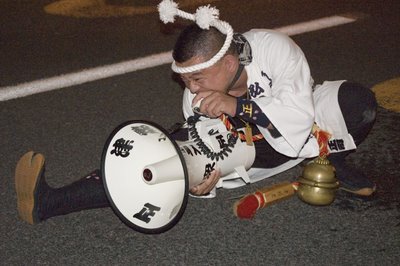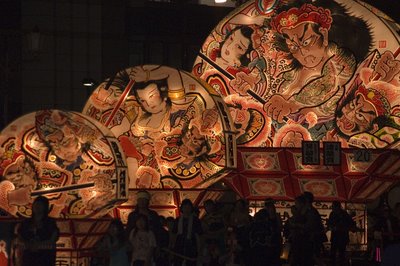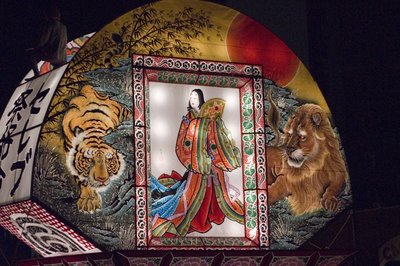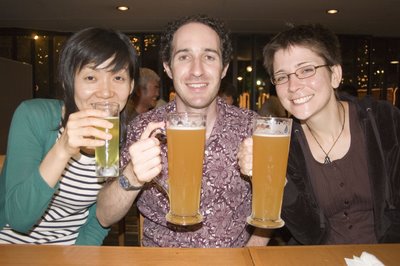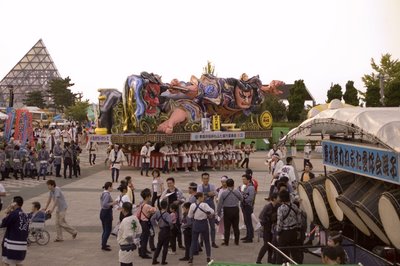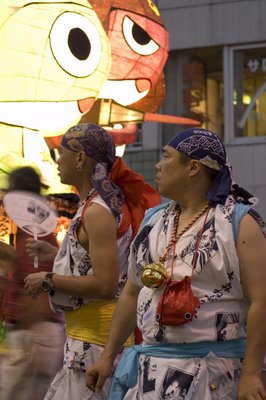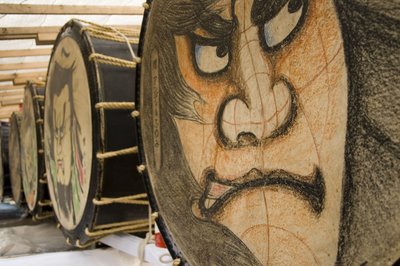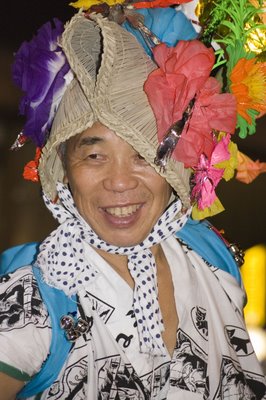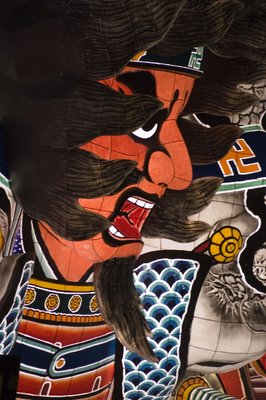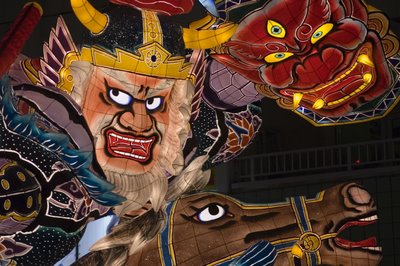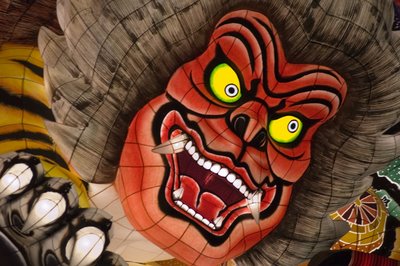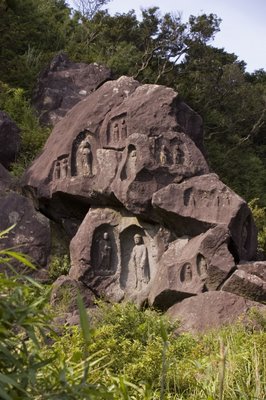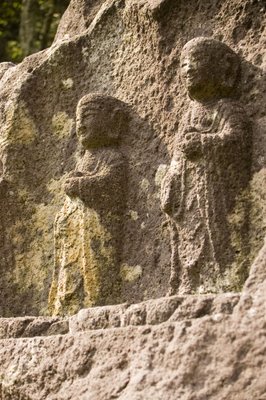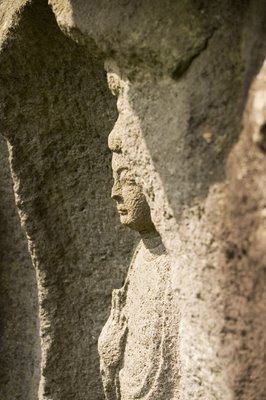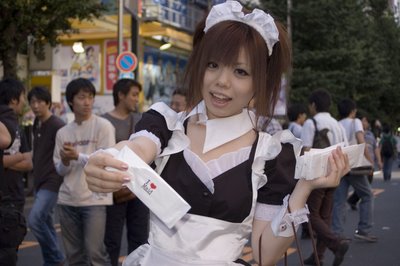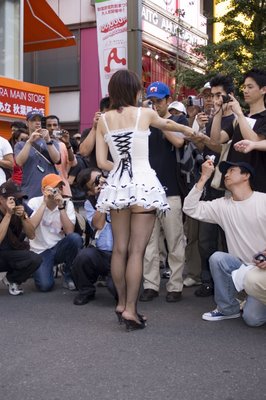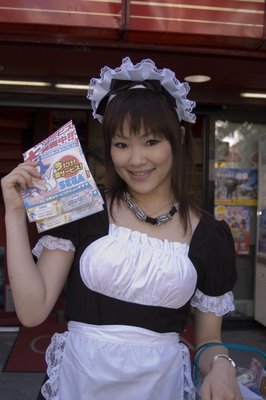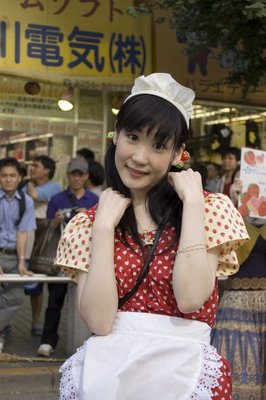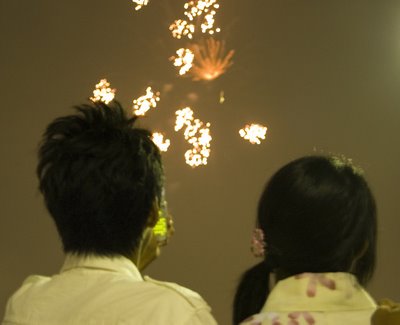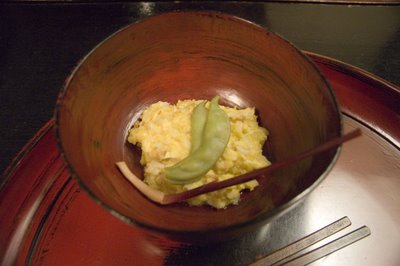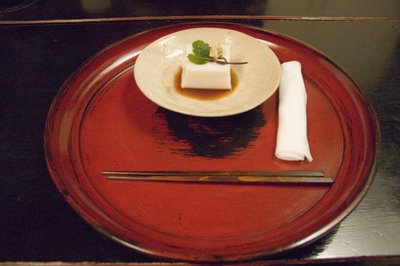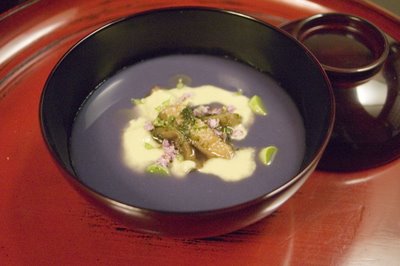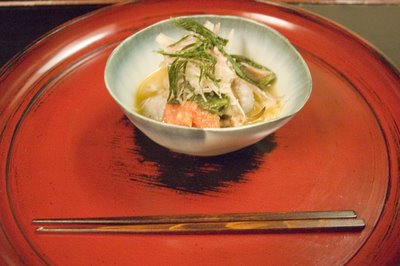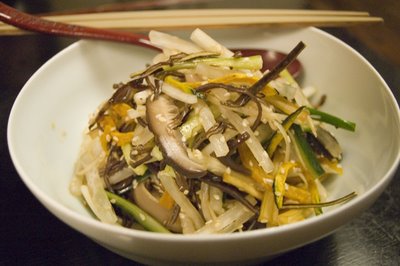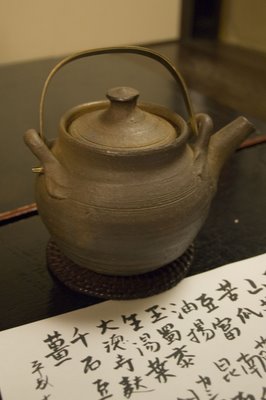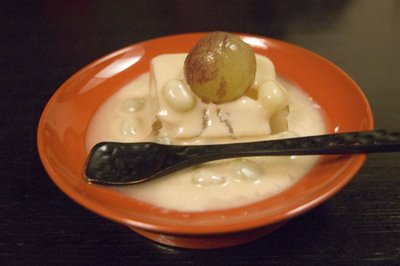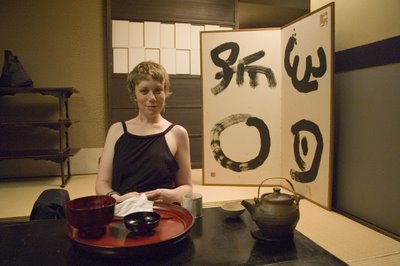Saturday, August 12, 2006
We've just returned from almost two weeks exploring new part of Japan in the blistering heat. After some days in Tokyo, we headed to Hakone to see beautiful old carved jizo and explore the woods of Kanagawa on the old Tokaido road. Then, we met up with Clare and Tomoko and shot up to Aomori-ken for the famous (and not-to-be-confused) Neputa and Nebuta festivals. A brief overnight ferry ride to Hakodate for incredibly fresh seafood breakfast rounded off a tour encompassing night buses, onsens, crazy festivals, sweat and sake. Phew.
Neputa Matsuri in Hirosaki
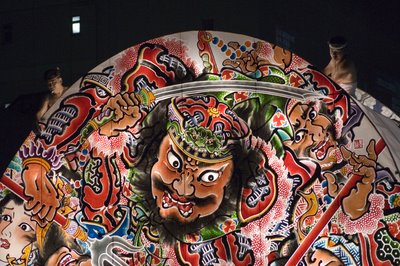
Like the Aomori Nebuta Festival, huge painted paper sculptures are paraded through the night streets, illuminated from within. But the Hirosaki festival is a more elegant, low key affair than its rumbustious neighbour. The floats are generally fan-shaped, with two flat sides. One portrays a historical battle scene while the reverse shows a beautiful woman, often framed by scenes of death. The local view is that Hirosaki reflects the sombre mood of preparation for war while Aomori expresses the jubilant return from a victorious battle.
Nebuta Matsuri in Aomori
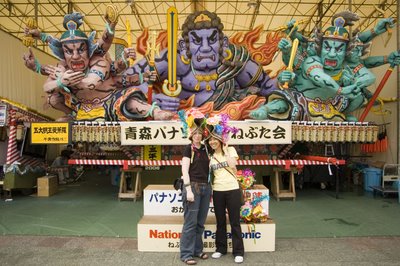
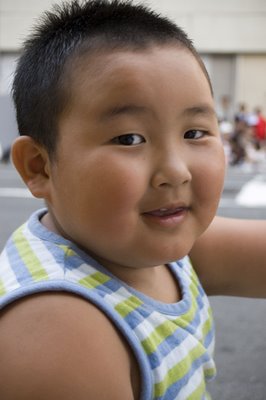
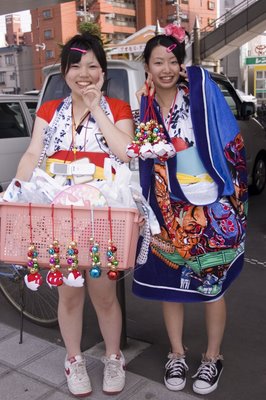
This info is from the Aomori city web site:
Origin and development of Nebuta
There are many theories about the origin of the Nebuta Festival. One is that it is said to have originated after the subjugation of rebels in this district by "General TAMURAMARO" in the early 800's. He had his army create large creatures, called "Nebuta", for frighten the enemy.Another theory is that the Nebuta Festival was a development of the "TANABATA" festival in China. One of the customs during this festival was "TORO" floating. A "toro" is a wooden frame box wrapped with Japanese paper. The Japanese light a candle inside the "TORO" and put it out to float onto the river or into the sea. The purpose behind this is to purify themselves and send the evil spirits out to sea. "TORO" floating is still one of the most impressive and beautiful sights during the summer nights of the Japanese festivals. On the final night, "toro" floating in accompanied by a large display of colorful fireworks. This is said to be the origin of the Nebuta Festival. Gradually these floats grew in size, as did the festivities, until they are the large size they are now.Today the Nebuta floats are made of a wood base, carefully covered with this same Japanese paper, beautifully clolred, and lighted from the inner part with hundreds of light bulbs. In early August the colorful floats are pulled through the streets accompanied by people dancing in native Nebuta costumes, playing tunes on flutes and drums.Many Aomori citizens are involved in the building of these beautiful floats. The Nebuta designers create their designs, patterned after historical people or themes. Development of themes takes place immediately after the previous year's festivities come to a close. Consequently, it takes the entire year, first in the development, then in the construction of the Nebuta float.
Thursday, August 10, 2006
Wednesday, August 09, 2006
Akihabara's Maids
In Tokyo's geek central, Akihabara you can buy cheap cameras and computers and when you are shopped out you can rest up at a Maid cafe. In such an establishment you will be served by sweet young things dressed as French maids. On Sunday afternoons the main street is closed off and the maids come out of the cafes to pose for the throngs of men with big cameras as a way of advertising their cafes. Of course there are maids who offer more than just coffee and cake ;)
Tuesday, August 08, 2006
Gesshinkyo Tokyo
We want to share another amazing meal with you. Chef Toshio Tanahashi cooks shojin ryori cuisine - based on the vegan meals eaten by Zen Buddhist monks. Each dish was amazing and the room we were served in was beautifully appointed with the pictured screen and a subtle ikebana. Before beginning the days food preparation Tanahashi completes "a set of morning rituals that consist of purifying oneself with water, presenting offerings to the Buddha, lighting incense, reciting the sutras, and cleaning the restaurant inside and out. When they are completed it is time for meditation on the wooden floor of the kitchen." Kateigaho International. All of this makes for some impressively delicious food :)

